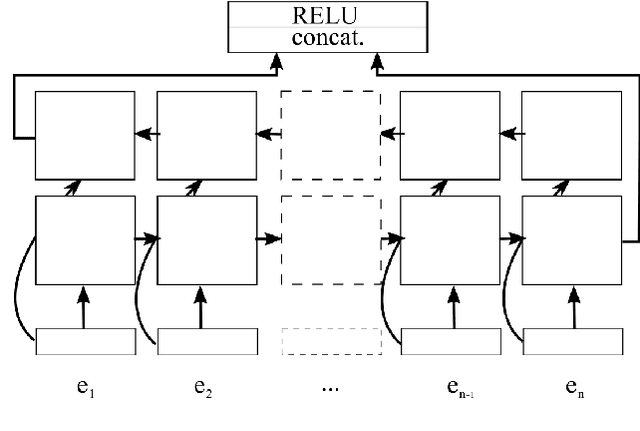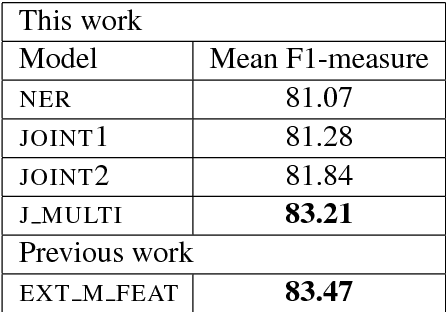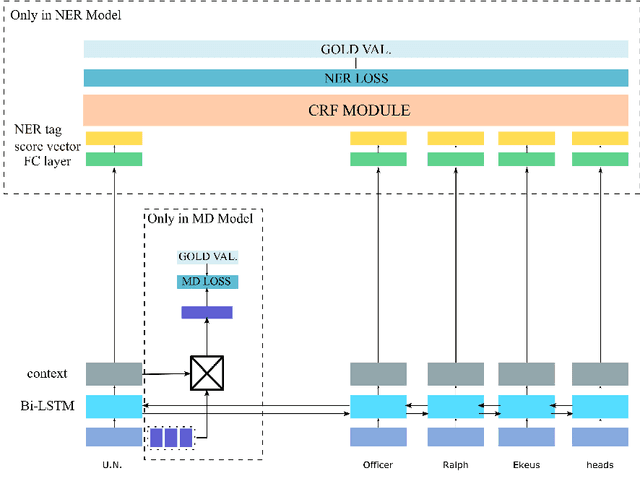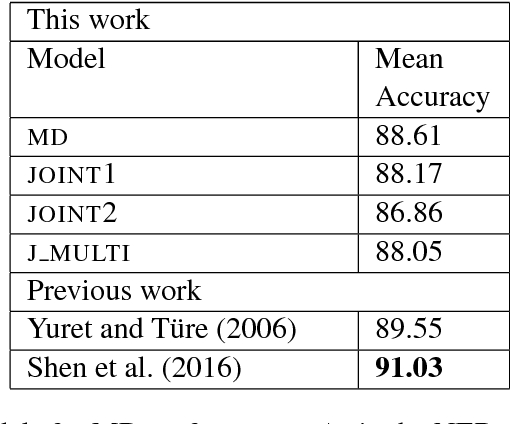Improving Named Entity Recognition by Jointly Learning to Disambiguate Morphological Tags
Paper and Code
Jul 17, 2018



Previous studies have shown that linguistic features of a word such as possession, genitive or other grammatical cases can be employed in word representations of a named entity recognition (NER) tagger to improve the performance for morphologically rich languages. However, these taggers require external morphological disambiguation (MD) tools to function which are hard to obtain or non-existent for many languages. In this work, we propose a model which alleviates the need for such disambiguators by jointly learning NER and MD taggers in languages for which one can provide a list of candidate morphological analyses. We show that this can be done independent of the morphological annotation schemes, which differ among languages. Our experiments employing three different model architectures that join these two tasks show that joint learning improves NER performance. Furthermore, the morphological disambiguator's performance is shown to be competitive.
 Add to Chrome
Add to Chrome Add to Firefox
Add to Firefox Add to Edge
Add to Edge